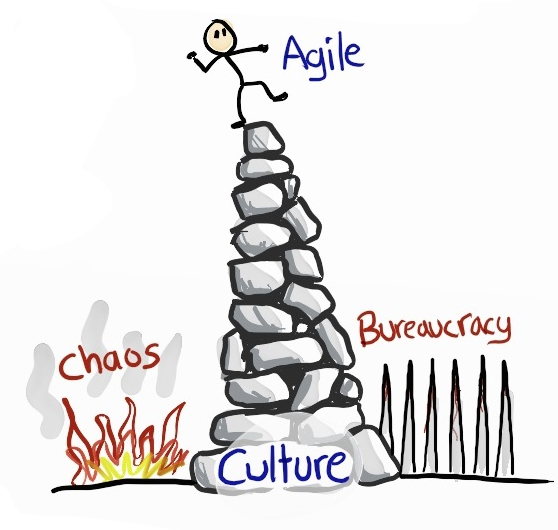Music to our ears: Spotify’s culture and how it sounds like CLA
A colleague recently shared this two-part video about music streaming service Spotify’s engineering culture with me and I was both impressed with the mindset at Spotify and struck by how much the concepts sound like those embedded within USAID’s collaborating, learning, and adapting (CLA) approach. If you haven’t seen the videos yet, I encourage you to take the 26 minutes to watch them. Agile/Lean Coach Henrik Kniberg, who works with companies like Spotify and Lego, provides a really wonderful overview of the “journey in progress...somewhere between ‘How Things Are Today’ and ‘How We Want Things To Be’.”
Spotify Engineering Culture - part 1 and Spotify Engineering Culture - part 2 from Spotify Training & Development on Vimeo.
In case you aren’t familiar with Agile and Lean, the former is a type of project management style often used in software development and based on “incremental, iterative work cadences1,” while the latter is more often associated with manufacturing and basically focuses on maximizing customer value while minimizing waste2. As you’ll see in Kniberg’s videos, Agile and Lean are key elements of Spotify’s culture. This allows the company’s engineers and developers to work in loosely coupled, but tightly aligned groups with lots of opportunities for cross-pollination. Their smaller and more frequent product releases enables them to get stuff into production early and often.
This focus on cross-pollination over standardization and self-service over handoffs made me think about the collaboration in CLA. It suggests that if we want many different activities to optimally contribute to a broader development goal, collaborating might be more effective if we emphasize alignment rather than prescriptiveness. And while our type of development may not have open source code the same way that software development does, we have many great knowledge hubs (like Learning Lab, Agrilinks, K4Health, and others) where we can share information about what we are doing, what’s working, and what isn’t. This, however, requires a high level of trust—”agile at scale requires trust at scale” says Kniberg— which is why, in CLA, we often talk about building relationships between USAID and its implementing partners based on openness, transparency, and innovation rather than fear of failure and predictability.
Failure and innovation are also addressed in part 2 of the Spotify videos. Spotify is an explicitly fail-friendly and experiment-friendly environment, but they consciously “limit the blast radius” of potential experiments so that one unsuccessful pilot can’t negatively impact other parts of an activity or project by using the decoupled approach mentioned earlier. Spotify gradually scales up those successful pilots through data-driven decision-making, prioritizing impact over speed. When things are less successful, they track needed improvements using Improvement Boards and Toyota Improvement Kata3. These techniques could be one insightful way to frame a “Pause & Reflect” activity as part of a broader CLA approach. For a given general area where improvement is needed, a Spotify Improvement Kata chart outlines:
- The current condition or problem(s)
- The definition of awesome (their way of describing the desired outcome)
- The next target condition
- The concrete actions to get to the next step in the road to awesome
These charts are written on whiteboards and use Post-it notes so that they can be updated as progress is made. It is easy to see how this technique could be applied systematically as part of intentional learning and adapting within a mission or implementing partner’s work.
 Although a streaming music company may not be an obvious place to looks for tips on collaborating, learning, and adapting, I think that the cultural ideals and practical approaches discussed in these videos are really relevant as we think about adaptively managing for results. Spotify leverages Agile methods and their commitment to a healthy culture to avoid falling into either raging chaos or stifling bureaucracy. This is a challenge familiar to us in development and one that CLA hopes to help address. Henrik Kniberg’s call to action at the end of his video—”You are the culture. Model the behavior you want to see.”—works equally well for us!
Although a streaming music company may not be an obvious place to looks for tips on collaborating, learning, and adapting, I think that the cultural ideals and practical approaches discussed in these videos are really relevant as we think about adaptively managing for results. Spotify leverages Agile methods and their commitment to a healthy culture to avoid falling into either raging chaos or stifling bureaucracy. This is a challenge familiar to us in development and one that CLA hopes to help address. Henrik Kniberg’s call to action at the end of his video—”You are the culture. Model the behavior you want to see.”—works equally well for us!
1 http://agilemethodology.org/
2 http://www.lean.org/WhatsLean/
3 https://en.wikipedia.org/wiki/Toyota_Kata



